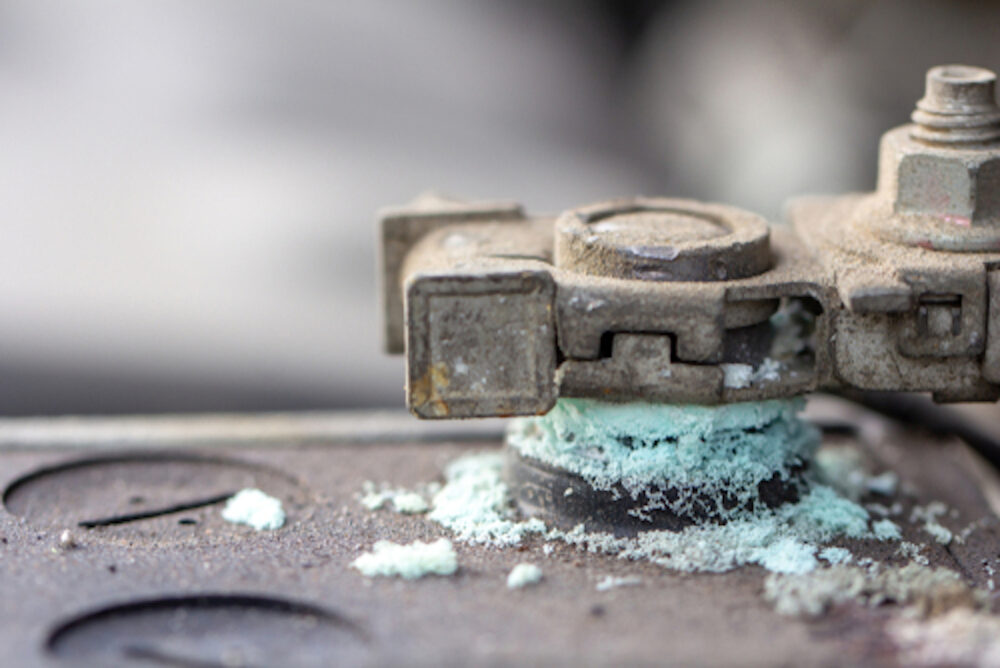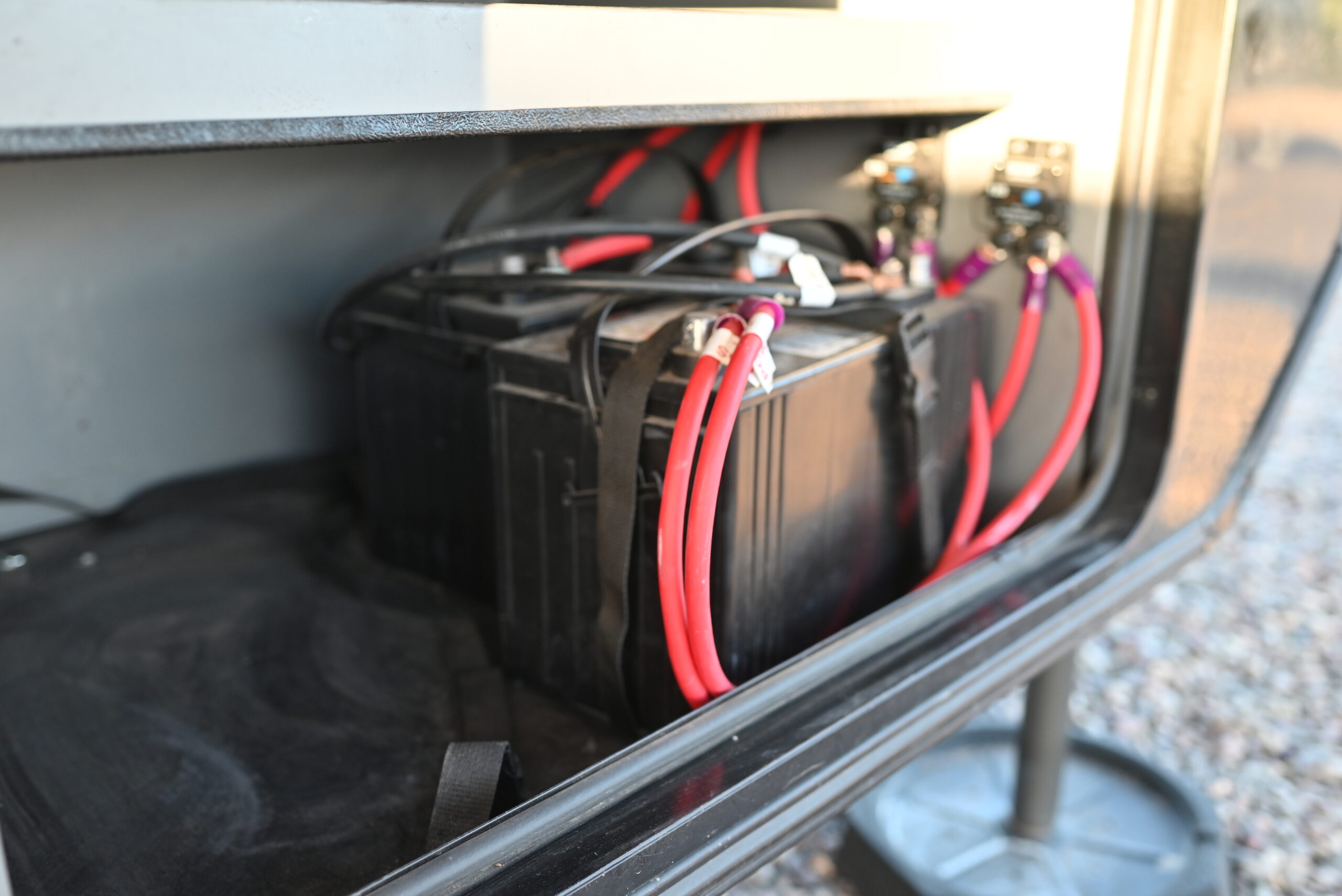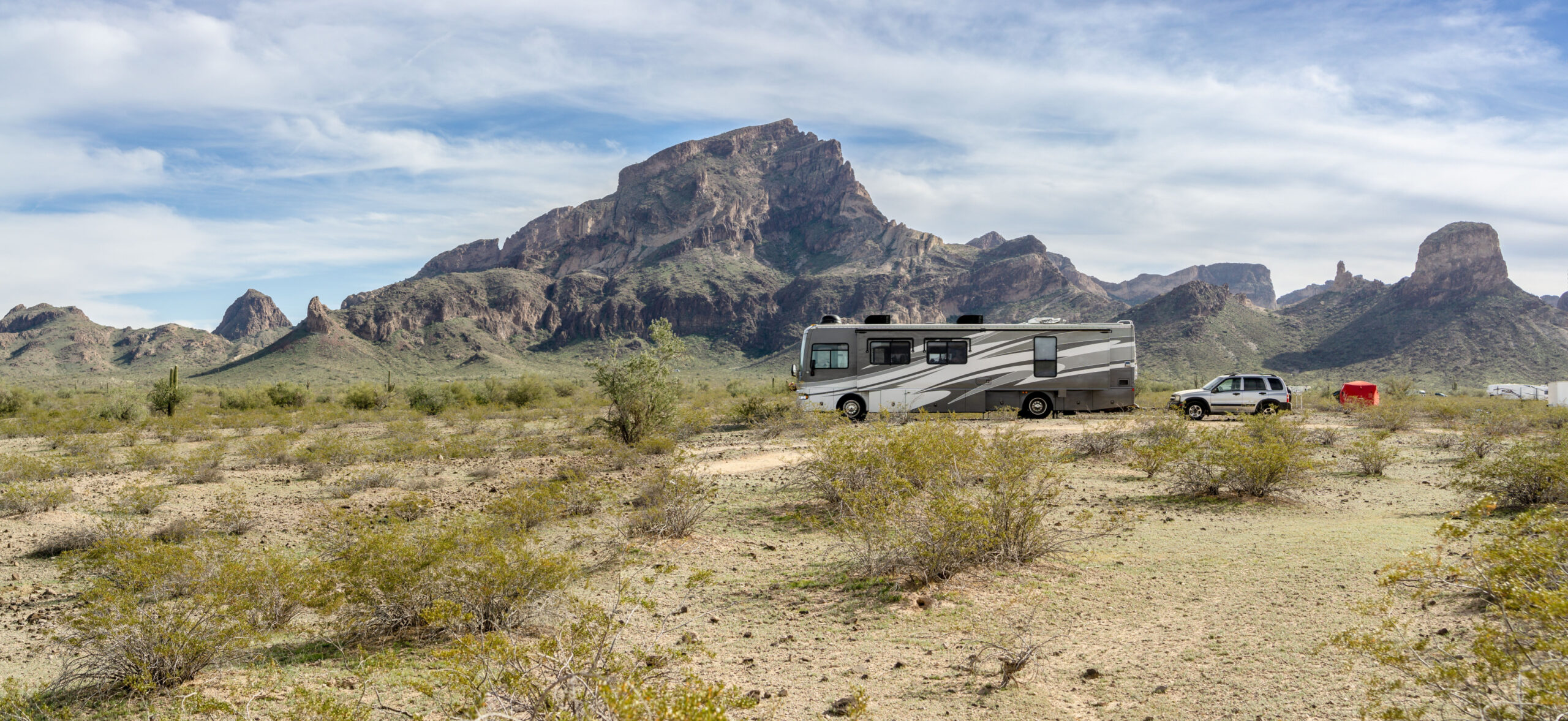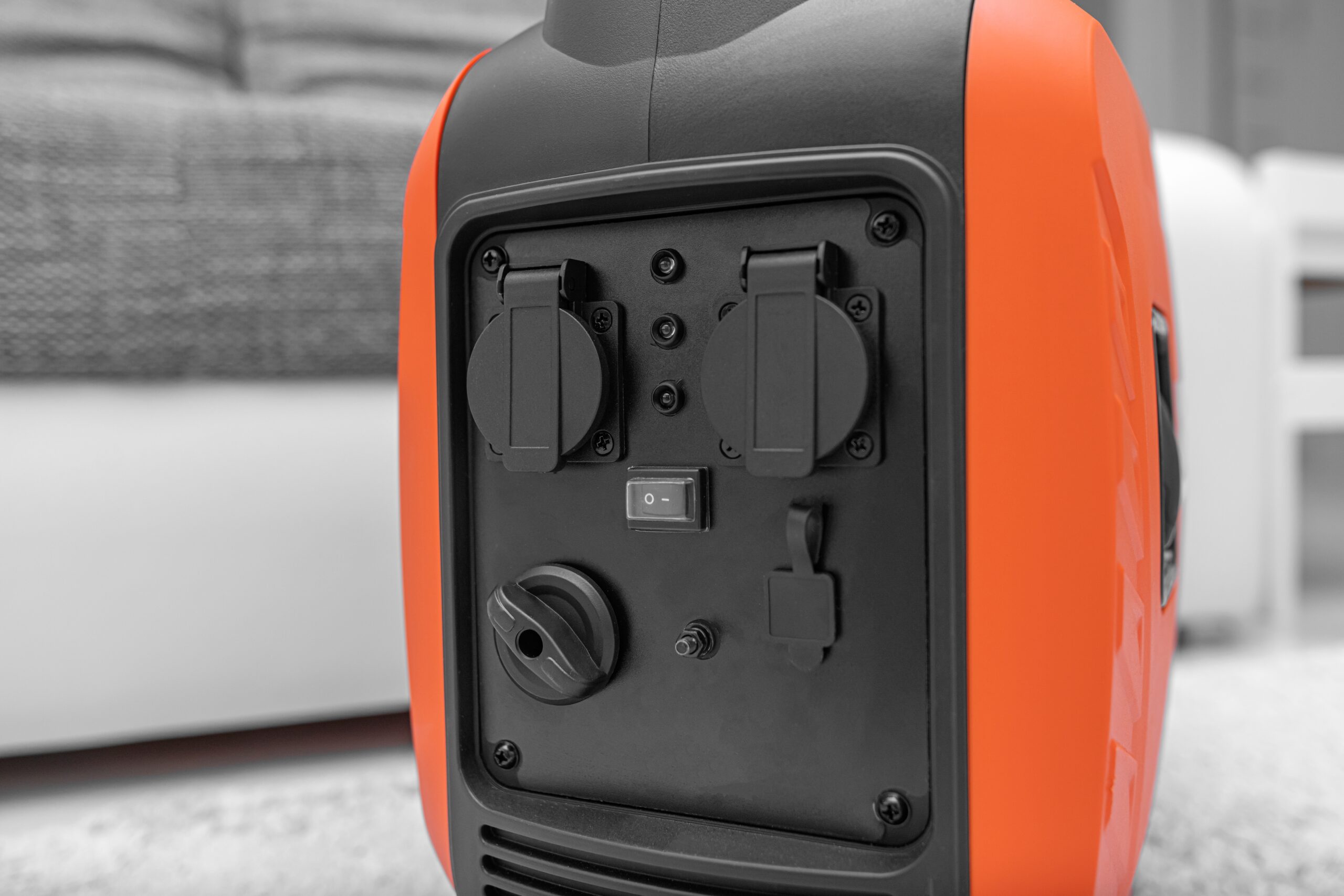
RV Battery Maintenance 101: Preventing Corrosion and Damage
RV batteries provide the means to start your RV and power its 12-volt appliances. When you think about it, your RV’s batteries enable you to enjoy a lot of the amenities in your RV that make it a little home on wheels wherever you go.
Your lights, water pump, furnace, and fridge need a fully functional house battery to operate well. All things considered, our RV batteries do an awful lot for us. All they ask in return is a little love and attention so they can do their job properly. After all, a corroded battery can put a damper on the fun in your RV.
What does battery corrosion look like?
Battery corrosion is pretty easy to spot. It’s a pale whitish, blue/green crust that forms around your battery posts. Whether it’s the chassis battery that fires up your engine or the house battery that runs your 12-volt appliances, corrosion on your battery terminals will prevent or slow electricity from traveling through the cables that connect your battery to your converter (or starter if it’s a chassis battery).
With that being said, a corroded battery won’t be able to deliver electricity, at least not efficiently. So, what do you do if you spot some of this blue-green, fun-killing stuff on either of your battery posts?
What to do if you have a corroded battery
If you don’t take steps to prevent battery corrosion on your chassis or house batteries, you’ll need to deal with corroded battery terminals sooner or later.
If you’ve got whitish/bluish-green powdery stuff on your battery posts, you’ve definitely got corrosion. Here’s how to get rid of it and prevent more from forming.
You’ll need:
- Nalgene or rubber gloves
- Safety glasses
- A ratchet with an appropriate socket, or a wrench or crescent wrench
- A wire brush or a toothbrush
- Dielectric grease
How To Clean And Protect Your Battery Terminals
- Safety first. Start by donning a pair of rubber gloves and safety glasses.
- Disconnect the negative (black) battery cable first, using the appropriate sized socket, wrench, or crescent wrench.
- Disconnect the positive (red) battery cable second.
- Use a brush to gently scrub the corrosion away and wipe up any residue with a damp paper towel.
- Apply dielectric grease to each battery post to prevent corrosion from forming again.
How To Prevent A Corroded Battery
Apply grease
The easiest way to prevent battery corrosion in your RV is to apply a layer of grease to each post and check them regularly for corrosion.
While you could use any kind of grease for this, dielectric grease may have some advantages over other types of grease because it’s dirt, salt, and corrosion-resistant. Other types of grease tend to attract dirt and dust.
Stay on top of your RV maintenance
Make sure you keep track of all your RV maintenance and repairs with an online tool such as RV LIFE Maintenance. Not only can you keep all of your documents in one place, but you’ll also receive timely reminders when maintenance is due to help you avoid costly repairs and potentially serious accidents.
Related articles:




Wash them with baking soda. Leave some on the battery. It will neutralize the acid on the battery and tray.
The question not answered is why you are having corrosion issues.
I had 4 Trojan T-105s for coach batteries in our motorhome. The corrosion mainly involved the battery tie-downs but there was some on the battery cables. Mysteriously, I never saw any corrosion on the sealed engine batteries (a clue). I had tried the felt rings around the battery terminals although that made no sense to me why they would help, and they didn’t make any difference. I tried spraying the terminals with the red battery terminal spray. That didn’t make any difference. The original D-rings on the canvas tie-downs dissolved. I replaced the rings with plastic parachute clips. The plastic dissolved in 2 weeks. I tried metal parachute clips and they corroded, actually fused together. I removed the canvas tie-down straps because I thought that they might be getting wet and could be the source of the corrosion. I replaced them with rubber tie-downs with S-hooks on their ends. I made sure that the tie-downs didn’t touch any terminals because they also conducted electricity. The hooks on one of the ends of each rubber cable dissolved. As the battery performance wasn’t lasting all night while boondocking in Quartzsite, I replaced them with 2 Battleborns from the big RV show. I planned to recharge the lead-acids in pairs and put them away in case they would be needed but a trickle charger wouldn’t charge them. I placed a smart charger on 2 of them and overnight, the corrosion almost totally ate through one of the copper battery cables! One of the Trojans was bad and during recharging, it gave off acid fumes. It was causing the corrosion. Replacing the lead-acid batteries with lithium batteries ended the corrosion problems.
If you are having excessive corrosion, check to see if there is bad battery in the equation. If one cell is particularly low, that could be a clue. Lithium batteries, like the Battleborns, are coming down in price a somewhat while the cost of deep cycle batteries is increasing a lot. The increased life span of the lithiums and their reduced weight might make buying them more cost-effective for you. However, be aware that there could be issues with your inverter/charger and engine alternator and simply swapping lithiums for lead-acids might not work for your situation. You can read about those issues in other articles.
Might mention that sprinking baking soda on the battery(s), brushing and rinsing with water will neutralize any acid in and around the corrosion and top of the battery(s) and aid in cleaning up.